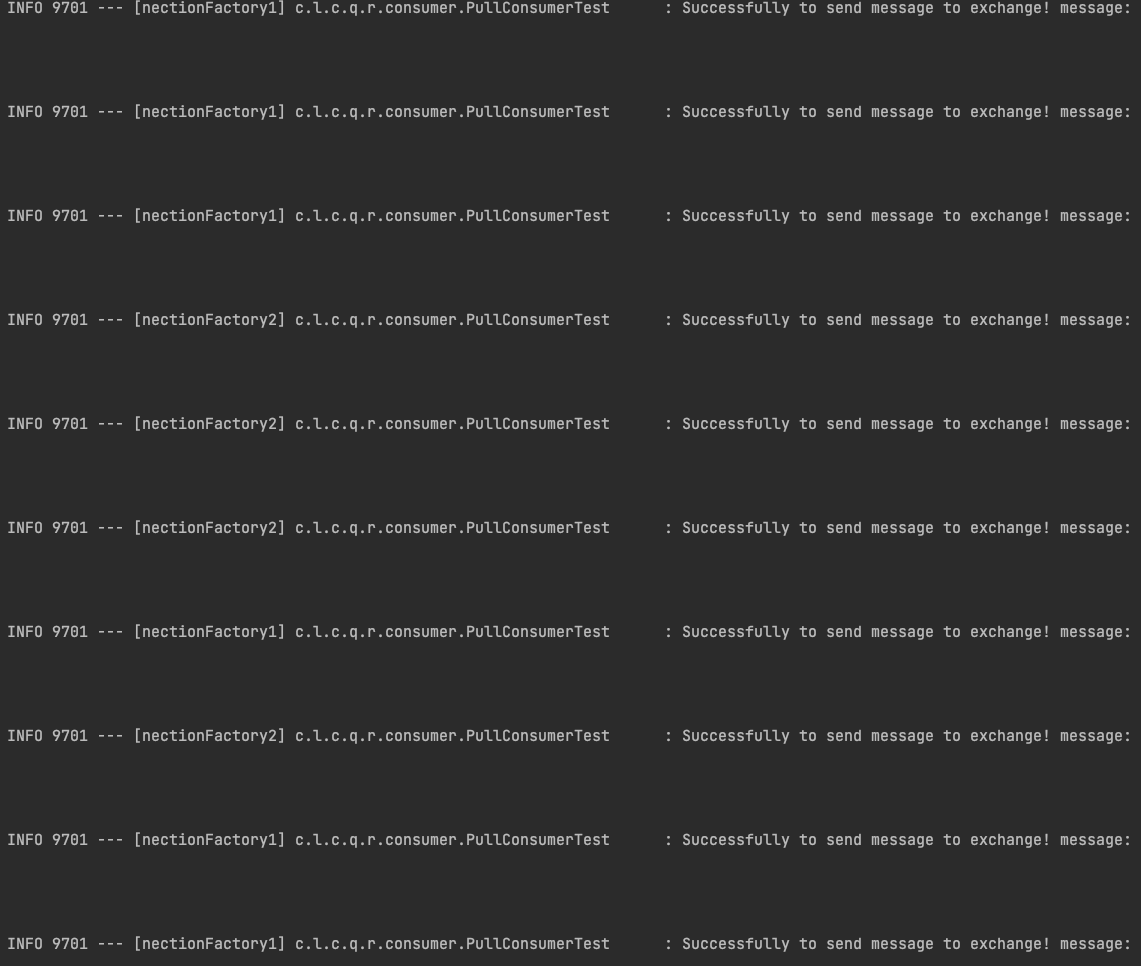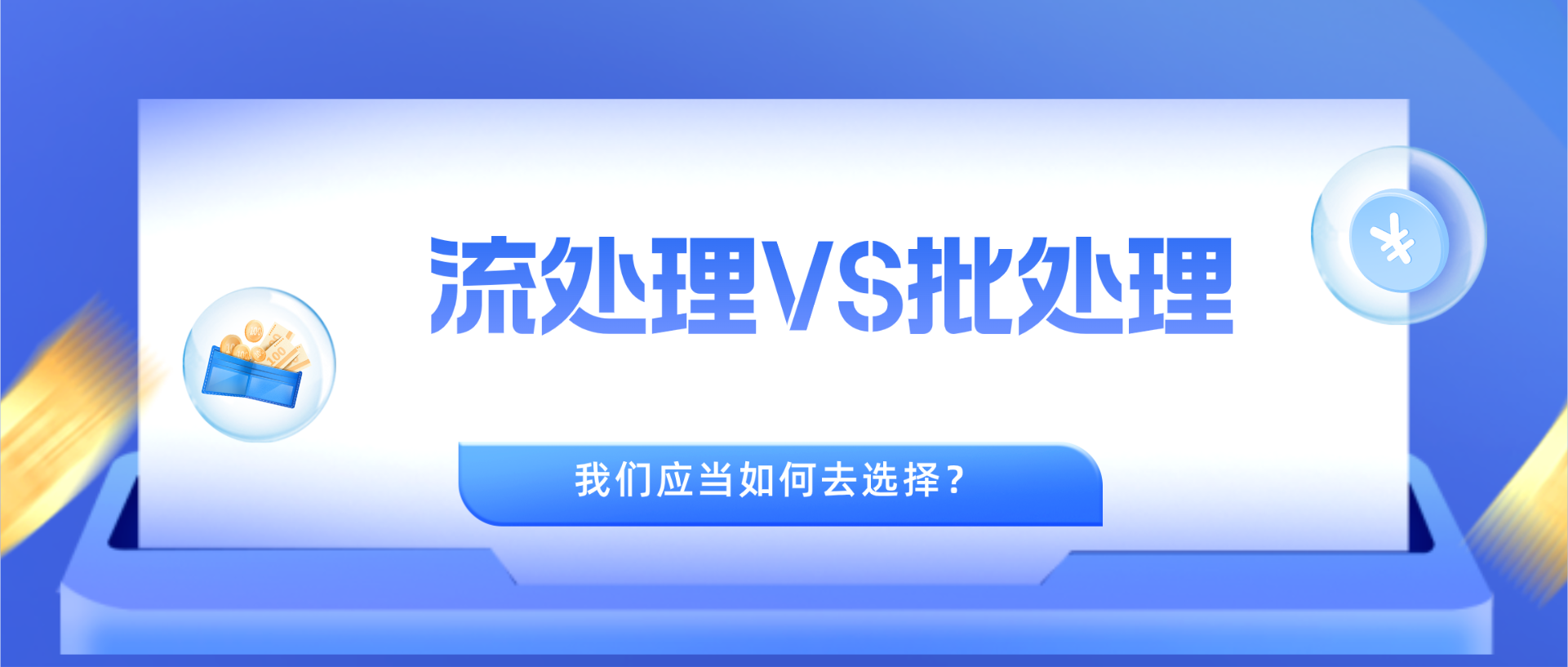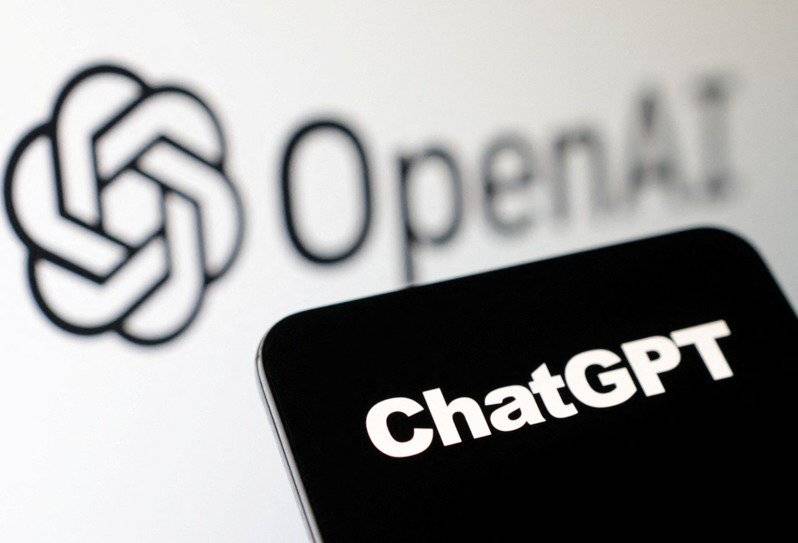原创
基于推和拉两种方式消费RabbitMQ消息
温馨提示:
本文最后更新于 2024年04月28日,已超过 604 天没有更新。若文章内的图片失效(无法正常加载),请留言反馈或直接联系我。
前言
”推“模式:
- MQ主动将消息推送给消费者
- 实时性较高
”拉“模式:
- 消费者主动从MQ中拉取消息
- 实时性不高
- 降低系统吞吐量
通常我们是用”推“模式的,但是,由于某种原因,可能只有在满足某种条件下,消费者才能去进行消费,或者需要批处理的时候,此时就需要用到”拉“模式。
一、“推”模式
1.定义交换机、队列、路由键以及yml配置
package com.lzhpo.common.queue.rabbitmq.consts;
import lombok.AccessLevel;
import lombok.NoArgsConstructor;
/** @author lzhpo */
@NoArgsConstructor(access = AccessLevel.PRIVATE)
public final class RabbitConst {
public static final String PUSH_EXCHANGE = "sun.push.exchange";
public static final String PUSH_QUEUE = "sun.push.queue";
public static final String PUSH_ROUTING_KEY = "sun.push.routing-key";
}
配置:
spring:
rabbitmq:
host: 127.0.0.1
port: 5672
username: guest
password: guest
virtual-host: /
# 开启发送失败退回
publisher-returns: true
# 开启消息确认机制
publisher-confirm-type: correlated
template:
# 设置消费者在消息没有被路由到合适队列情况下会被return监听,而不会自动删除
mandatory: true
listener:
type: simple
simple:
# 手动ACK
acknowledge-mode: manual
# 重试次数超过上面的设置之后是否丢弃(要想将无法消费的消息丢到死信队列,此处必须配置为false)
default-requeue-rejected: false
retry:
# 开启重试机制
enabled: true
# 重试次数,默认:3次
max-attempts: 3
2.定义消费者
import com.lzhpo.common.queue.rabbitmq.consts.RabbitConst;
import com.rabbitmq.client.Channel;
import java.util.Map;
import lombok.extern.slf4j.Slf4j;
import org.springframework.amqp.rabbit.annotation.Exchange;
import org.springframework.amqp.rabbit.annotation.Queue;
import org.springframework.amqp.rabbit.annotation.QueueBinding;
import org.springframework.amqp.rabbit.annotation.RabbitListener;
import org.springframework.amqp.support.AmqpHeaders;
import org.springframework.messaging.handler.annotation.Headers;
import org.springframework.stereotype.Component;
/** @author lzhpo */
@Slf4j
@Component
public class RabbitPushConsumer {
@RabbitListener(
bindings = {
@QueueBinding(
value = @Queue(value = RabbitConst.PUSH_QUEUE, durable = "true", autoDelete = "false"),
exchange = @Exchange(value = RabbitConst.PUSH_EXCHANGE),
key = {RabbitConst.PUSH_ROUTING_KEY})
})
public void listener(String message, @Headers Map<String, Object> headers, Channel channel) {
log.info("Consumer receive new message: {}", message);
final Long deliveryTag = (Long) headers.get(AmqpHeaders.DELIVERY_TAG);
try {
channel.basicAck(deliveryTag, false);
log.info("Consumption success: {}", message);
} catch (Exception e) {
log.error("Abnormal consumption!", e);
try {
channel.basicNack(deliveryTag, false, true);
} catch (Exception ex) {
log.error("Reject message exception!", ex);
}
}
}
}
这里headers同时也可以获取其它信息:
final String exchange = (String) headers.get(AmqpHeaders.RECEIVED_EXCHANGE);
final String queue = (String) headers.get(AmqpHeaders.CONSUMER_QUEUE);
final String routingKey = (String) headers.get(AmqpHeaders.RECEIVED_ROUTING_KEY);
3.简单写一个生产者测试用例发送消息
@Test
void send() {
RabbitTemplate rabbitTemplate = SpringUtil.getBean(RabbitTemplate.class);
// 消息发送到RabbitMQ交换机后接收ack回调(不能依靠此ack值判断消息是否被消费者成功消费)
rabbitTemplate.setConfirmCallback(
(correlationData, ack, cause) -> {
if (ack) {
log.info("Successfully to send message to exchange! ");
} else {
log.error(
"Failed to send message to exchange! correlationData: {}, cause: {}",
correlationData,
cause);
}
});
rabbitTemplate.setMandatory(true);
// 消息发送到RabbitMQ交换机,但无相应queue时的回调
rabbitTemplate.setReturnsCallback(
returned ->
log.error(
"The message sent has no corresponding queue! Returned message: {}", returned));
rabbitTemplate.convertAndSend(RabbitConst.PUSH_EXCHANGE, RabbitConst.PUSH_ROUTING_KEY, "123");
}
4.测试结果

二、“拉”模式(可批量)
1.定义交换机、队列、路由键常量以及yml配置
import lombok.AccessLevel;
import lombok.NoArgsConstructor;
/** @author lzhpo */
@NoArgsConstructor(access = AccessLevel.PRIVATE)
public final class RabbitConst {
public static final String PULL_EXCHANGE = "sun.pull.exchange";
public static final String PULL_QUEUE = "sun.pull.queue";
public static final String PULL_ROUTING_KEY = "sun.pull.routing-key";
}
yml配置:
spring:
rabbitmq:
host: 127.0.0.1
port: 5672
username: guest
password: guest
virtual-host: /
# 开启发送失败退回
publisher-returns: true
# 开启消息确认机制
publisher-confirm-type: correlated
template:
# 设置消费者在消息没有被路由到合适队列情况下会被return监听,而不会自动删除
mandatory: true
listener:
type: simple
simple:
# 手动ACK
acknowledge-mode: manual
# 重试次数超过上面的设置之后是否丢弃(要想将无法消费的消息丢到死信队列,此处必须配置为false)
default-requeue-rejected: false
retry:
# 开启重试机制
enabled: true
# 重试次数,默认:3次
max-attempts: 3
2.将交换机、队列、路由键进行绑定
import com.lzhpo.common.queue.rabbitmq.consts.RabbitConst;
import org.springframework.amqp.core.Binding;
import org.springframework.amqp.core.BindingBuilder;
import org.springframework.amqp.core.DirectExchange;
import org.springframework.amqp.core.Queue;
import org.springframework.amqp.rabbit.connection.ConnectionFactory;
import org.springframework.amqp.rabbit.core.RabbitTemplate;
import org.springframework.beans.factory.config.ConfigurableBeanFactory;
import org.springframework.context.annotation.Bean;
import org.springframework.context.annotation.Configuration;
import org.springframework.context.annotation.Scope;
/** @author lzhpo */
@Configuration
public class RabbitConfig {
/**
* Prototype for {@link RabbitTemplate}
*
* @param connectionFactory {@link ConnectionFactory}
* @return {@link RabbitTemplate}
*/
@Bean
@Scope(ConfigurableBeanFactory.SCOPE_PROTOTYPE)
public RabbitTemplate rabbitTemplate(ConnectionFactory connectionFactory) {
RabbitTemplate template = new RabbitTemplate(connectionFactory);
template.setMandatory(true);
return template;
}
/**
* Create {@link RabbitConst#PULL_EXCHANGE} direct type exchange
*
* @return {@link DirectExchange}
*/
@Bean
public DirectExchange pullDirectExchange() {
return new DirectExchange(RabbitConst.PULL_EXCHANGE, true, false);
}
/**
* Create {@link RabbitConst#PULL_QUEUE} queue
*
* @return {@link Queue}
*/
@Bean
public Queue pullQueue() {
return new Queue(RabbitConst.PULL_QUEUE, true);
}
/**
* Binding {@link RabbitConfig#pullQueue()} with {@link RabbitConfig#pullQueue()}
*
* @return {@link Binding}
*/
@Bean
public Binding pullBinding() {
return BindingBuilder.bind(pullQueue())
.to(pullDirectExchange())
.with(RabbitConst.PULL_ROUTING_KEY);
}
}
3.编写简单测试用例
import cn.hutool.extra.spring.SpringUtil;
import com.lzhpo.common.queue.rabbitmq.TestRabbitMqApp;
import com.lzhpo.common.queue.rabbitmq.consts.RabbitConst;
import com.lzhpo.common.queue.rabbitmq.utils.MessageUtil;
import com.rabbitmq.client.GetResponse;
import java.util.ArrayList;
import java.util.List;
import java.util.Objects;
import lombok.Data;
import lombok.extern.slf4j.Slf4j;
import org.junit.jupiter.api.Test;
import org.springframework.amqp.rabbit.core.RabbitTemplate;
import org.springframework.boot.test.context.SpringBootTest;
/** @author lzhpo */
@Slf4j
@SpringBootTest(classes = TestRabbitMqApp.class)
class PullConsumerTest {
@Test
void producer() {
for (int i = 1; i <= 10; i++) {
SampleMessage sampleMessage = new SampleMessage();
sampleMessage.setId(i);
sampleMessage.setName("Lewis-" + i);
String messageJson = MessageUtil.toJsonString(sampleMessage);
RabbitTemplate rabbitTemplate = SpringUtil.getBean(RabbitTemplate.class);
// 消息发送到RabbitMQ交换机后接收ack回调(不能依靠此ack值判断消息是否被消费者成功消费)
rabbitTemplate.setConfirmCallback(
(correlationData, ack, cause) -> {
if (ack) {
log.info("Successfully to send message to exchange! message: {}", messageJson);
} else {
log.error(
"Failed to send message to exchange! message: {},correlationData: {}, cause: {}",
messageJson,
correlationData,
cause);
}
});
rabbitTemplate.setMandatory(true);
// 消息发送到RabbitMQ交换机,但无相应queue时的回调
rabbitTemplate.setReturnsCallback(
returned ->
log.error(
"The message sent has no corresponding queue! Returned message: {}", returned));
rabbitTemplate.convertAndSend(RabbitConst.PULL_EXCHANGE, RabbitConst.PULL_ROUTING_KEY, messageJson);
}
}
@Test
void consumer() {
// 要拉取的消息条数
int batchSize = 2;
RabbitTemplate rabbitTemplate = SpringUtil.getBean(RabbitTemplate.class);
rabbitTemplate.execute(
channel -> {
List<SampleMessage> messageBodyList = new ArrayList<>(batchSize);
long deliveryTag = 0;
while (messageBodyList.size() < batchSize) {
GetResponse response = channel.basicGet(RabbitConst.PULL_QUEUE, false);
log.info("The result of pulling the message response this time: {}", response);
if (Objects.isNull(response)) {
break;
}
byte[] bodyBytes = response.getBody();
String json = new String(bodyBytes);
SampleMessage messageBody = MessageUtil.parse(json, SampleMessage.class);
messageBodyList.add(messageBody);
deliveryTag = response.getEnvelope().getDeliveryTag();
}
log.info(
"A total of {} messages were pulled this time:{}",
messageBodyList.size(),
messageBodyList);
try {
// 可以在此做一些业务操作
// 也可以将此消费者测试用例封装起来,用java.util.function.Consumer作为参数传入,在此进行consumer.accept(messageBodyList),以确保业务操作成功之后ack
channel.basicAck(deliveryTag, true);
} catch (Exception e) {
log.error("Abnormal consumption!", e);
try {
channel.basicNack(deliveryTag, true, true);
} catch (Exception ex) {
log.error("Reject message exception!", ex);
}
}
// Or you can return the result to handle it yourself,
// but you must ensure that the ack will not affect you
return null;
});
}
@Data
private static class SampleMessage {
private int id;
private String name;
}
}
上面消费者当中,可以手动指定要拉取的消息条数,拉取之后也可以做一些业务操作,然后再进行ack(确保业务操作成功之后再ack)
4.生产者发送消息

RabbitMQ控制台同样也可以看得到有10条消息:

5.手动拉取两条消息进行消费

RabbitMQ控制台也看得到少了两条已消费的消息:

说明
关于deliveryTag
deliveryTag:消息投递序号。范围是1~9223372036854775807(long类型最大值)。
当注册消费者时,RabbitMQ将使用basic.deliver方法传递消息,该方法带有一个deliveryTag,它唯一地标识一个channel上的传递,因此,deliveryTag的范围仅限于channel。
在手动ack的时候,deliveryTag也可用于ack、nack、reject等操作。
手动应答同时也可被批处理,它可以减少网络流量。
ack、nack的mutiple参数设置为true,则可以一次性应答deliveryTag小于等于传入值的所有应答。
例如:
// 手动消费,第二个参数即为mutiple
channel.basicAck(deliveryTag, true);
// 手动拒绝消息
// 第二个参数即为mutiple
// 第三个参数为requeue:被拒绝的消息是否应该重新排队而不是丢弃/死信
channel.basicNack(deliveryTag, true, true);
在最前面的”推“模式的消费者中,mutiple参数就是为false,即一条一条消费。
- 本文标签: Java RabbitMQ
- 本文链接: http://www.lzhpo.com/article/172
- 版权声明: 本文由lzhpo原创发布,转载请遵循《署名-非商业性使用-相同方式共享 4.0 国际 (CC BY-NC-SA 4.0)》许可协议授权




















